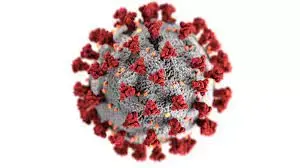Last night she was coughing in a manner my asleep brain read as “gross”, so unconsciously noped the fuck out of there and slept on the sofa. I can’t believe my non-awake brain got it.
She tested positive a few hours ago, so now I just have 7 days to worry. I probably have it, I feel a bit off already.
I know that it’s more than most people, but she was wearing low quality masks, going to a non-safe dentist at peak times, and avoiding the booster. I’ve been nicely pushing her for years, and she brings this shit home. She’s also sorry, and I say it’s fine because I want her to feel better and recover, but secretly I’m fucking raging.
Sorry to rant. Better on Hexbear than out loud.


kinda weird for you to cite someone else’s work when you report those numbers then no?
First, are you using “significantly” here to mean statistically significant or as a synonym for “much”? I didn’t spot where the authors made any claims about statistical significance of between-group comparisons, though they’re very careful to report these for within-group comparisons. Second, even in the figure you cite, the dysautonomia bar is near 2 in both groups. Without more information about how much uncertainty there is in these odds, even if we abuse the statistics to draw an invalid comparison, at best we’d conclude that the post exposure odds of dysautonomia are about the same between groups.
You seem to have at least a passing knowledge of probability theory, so please, reread the authors’ corrections for their own explanation as to why the comparison that your argument rests on cannot be drawn from the data or results in the work you cited, for POTS, myocarditis, or any of the other outcomes studied.
Where did you source your data, are you willing to share them, and are you willing to divulge more on how your own observational experiment was staged/what your methodology was?
You kinda do if vaccination unconditionally lowers the risk of negative outcomes, which more recent followup work has found to be the case for POTS and myocarditis.
That’s an opinion you should keep to yourself in the comments of a post explicitly created to vent about someone in OP’s life deliberately doing less less than OP has asked for to protect themselves and OP.
No, you can use the info there and elsewhere to do your own risk calculus. They have their raw counts in the table.
Both depending on your alpha level; the odds ratio for this specific dataset and viral myocarditis is
Fisher's Exact Test for Count Data data: matrix(c(3, 12460 - 3, 18, 284592 - 18), ncol = 2) p-value = 0.05583 alternative hypothesis: true odds ratio is not equal to 1 95 percent confidence interval: 0.7182998 13.0456836 sample estimates: odds ratio 3.807808That’s a pretty large effect size in the sample.
There is no abuse of statistics or invalid comparison to report an observed sample difference. Sample proportions are unbiased estimators. They observed an higher IRR in the post-vaccine than the post-infection group. It’d be inappropriate to claim with any level of confidence maps to the population proportions, but nobody is doing that.
I’m a statistics professor. Their note on fully adjusted odds comparisons isn’t of interest to me doing back of the envelope math for my own personal risk calculations. Unless you’re going to posit the the presence of severe confounding factors between the two seperate populations, I’m going to help myself to the null that the randomization limits the effect of the populations being exclusive on the final parameter in question. They helped themselves when they did their between group comparison, and you felt it was worth including and bolding when it supported your argument.
Why would you ever use unconditional probabilities for inference when the prevalence of negative outcomes are so heavily stratified? To give you a more extreme example, this is like quoting airplane safety statistics at someone whose on a plane that the wing just fell off of. The statistics about unconditioned airplane safety are true, but meaningless once conditioned with additional information. Specifically, the study you linked to on myocarditis found a large effect with the Moderna vaccine than they did with covid infection.
When you know which vaccine someone got, the appropriate probability is the conditioned one, not the unconditioned one.
To sum up this digression into statistics, if you can estimate the odds ratio of negative outcomes to infection and vaccine (for a specific cause or all cause, that’s your choice), conditioned to your specific demographic and health information, you can then calculate a daily risk of COVID infection, pcritical, at which point rolling the dice with covid is actually a safer bet than the vaccine. That might be quite small, and very likely will be for most people, (to the point where the vaccine is a safer bet), but it’s not 0. To give you a concrete example; my 95 year old neighbor is unvaccinated. She hasn’t been to an indoord public place since February 2020, apart from doctors offices, which she wears an n95 into. She only has me and her daughter come into her house, and everyone will wear an n95. She has a list of drug sensitivities and comorbidities as long as my arm (I do grant that I consider some of these exaggerated). Her daily risk of infection is so vanishingly low, that yeah, in her case, pinfection< pcritical, the probability likely works out in favor of not vaccinating. Do you buy that?
Only if we want them to stay mad at their significant other. He’s welcome to be mad about his situation, he should be. But what good outcome do you foresee about reinforcing that anger at an individual and not the fucked up system that put us here.
sorry again for assuming in anger that you were unserious and sorry for being so combative.
There are a lot of people saying things that seem superficially similar to your argument specifically to absolve people for exempting themselves from vaccination out of convenience, and not empirical risk minimization. I think your calculus is mostly reasonable, especially in the example you gave, though I wonder about some of the conclusions in the myocarditis work I linked on the vaccine-induced symptoms resolving faster and being better tolerated by the patients as compared to those of the infection.
It’s invalidating, and feels bad to be on the receiving end of “you shouldn’t be mad at the thing you’re mad at” when you’re venting.